CAA News Today
The Art Bulletin Seeks Editorial Board Members
posted by CAA — March 21, 2023
**THESE POSITIONS HAVE BEEN FILLED. NOMINATIONS ARE CLOSED**
CAA invites nominations and self-nominations individuals to serve on The Art Bulletin Editorial Board for a four-year term, July 1, 2023–June 30, 2027.
The ideal candidate has published substantially in the field and may be an academic, museum-based, or independent scholar; institutional affiliation is not required. The Art Bulletin features leading scholarship in the English language in all aspects of art history as practiced in the academy, museums, and other institutions.
The editorial board advises The Art Bulletin Editor-in-Chief and assists by seeking authors, articles, and other content for the journal; performs peer review and recommends peer reviewers; may propose new initiatives for the journal; and may support fundraising efforts on the journal’s behalf. Members also assist the editor-in-chief to keep abreast of trends and issues in the field by attending and reporting on sessions at the CAA Annual Conference and other academic conferences, symposia, and events in their fields.
The Art Bulletin Editorial Board meets three times a year, with meetings in the spring and fall plus one at the CAA Annual Conference in February. The spring and fall meetings are held by teleconference. Members pay travel and lodging expenses to attend the conference in February if held in person. Members of all editorial boards volunteer their services to CAA without compensation.
Candidates must be current CAA members in good standing and should not be serving on the editorial board of a competitive journal. Members may not publish their own work in the journal during the term of service. CAA encourages applications from colleagues who will contribute to the diversity of perspectives on The Art Bulletin Editorial Board and who will engage actively with conversations about the discipline’s engagements with differences of culture, religion, nationality, race, gender, sexuality, and access. Nominators should ascertain their nominee’s willingness to serve before submitting a name; self-nominations are also welcome. Interested applicants—both self-nominated or nominated by someone else—should submit a CV and a cover letter as one PDF document to Eugenia Bell, Editorial Director, ebell@collegeart.org.
Deadline: April 30, 2023
Art Journal Seeks Editor-in-Chief
posted by CAA — March 21, 2023
**THESE POSITIONS HAVE BEEN FILLED. NOMINATIONS ARE CLOSED**
The Art Journal/AJO Editorial Board invites nominations and self-nominations for the position of editor-in-chief for the term July 1, 2023–June 30, 2027 (with service on the Art Journal/AJO Editorial Board in 2023–24 as editor designate, and in 2027–28 as past editor). Art Journal, published quarterly by CAA, is devoted to twentieth- and twenty-first-century art and visual culture.
Working with the editorial board, the editor-in-chief (EIC) is responsible for the content and character of the journal. The EIC solicits content, reads all submitted manuscripts, sends submissions to peer reviewers, and provides guidance to authors concerning the form and content of submissions; develops projects; makes final decisions regarding content; and may support fundraising efforts on the journal’s behalf. A candidate may be an artist, art historian, art critic, art educator, curator, or other art professional. The EIC works closely with CAA’s New York staff, attends three meetings each year of the Art Journal/AJO Editorial Board—held in the spring and fall by teleconference or in New York, and in February at the CAA Annual Conference—and submits an annual report to CAA’s Board of Directors.
The position usually requires twenty hours a week. CAA provides financial compensation for course releases, usually to the EIC’s employer. The EIC is responsible for expenses related to travel and lodging.
Candidates must be current CAA members in good standing and should not be serving on the editorial board of a competitive journal or on another CAA editorial board or committee. CAA encourages applications from colleagues who will contribute to the diversity of perspectives on the Art Journal/AJO Editorial Board and who will engage actively with conversations about the discipline’s engagements with differences of culture, religion, nationality, race, gender, sexuality, and access. Nominators should ascertain their nominee’s willingness to serve before submitting a name; self-nominations are also welcome. A CV, a letter of interest from the nominee, and at least one letter of recommendation must accompany each nomination. Please send nominations by email to Eugenia Bell, Editorial Director, ebell@collegeart.org, and include “Art Journal Editor-in-Chief Search” in the subject line.
Deadline: April 30, 2023
The Art Bulletin Seeks Reviews Editor
posted by CAA — March 21, 2023
**THESE POSITIONS HAVE BEEN FILLED. NOMINATIONS ARE CLOSED**
Reviews Editor Opening
The Editorial Board of The Art Bulletin seeks nominations and self-nominations for the position of reviews editor for a three-year term July 1, 2024–June 30, 2027 (with service as incoming reviews editor designate July 1, 2023–June 30, 2024). The Art Bulletin, published quarterly by CAA, features leading scholarship in the English language in all aspects of art history as practiced in the academy, museums, and other institutions.
Candidates should be art scholars with stature in the field and experience in editing book and/or exhibition reviews; institutional affiliation is not required. Candidates should be published authors of at least one book.
The reviews editor is responsible for commissioning all book and exhibition reviews in The Art Bulletin. He or she selects books and exhibitions for review, commissions reviewers, and determines the appropriate length and character of reviews. The reviews editor also works with authors and CAA’s editorial director in the development and preparation of review manuscripts for publication. He or she is expected to keep abreast of newly published and important books and recent exhibitions in the fields of art history, criticism, theory, visual studies, and museum publishing. This is a three-year term, which includes membership on the Art Bulletin Editorial Board.
The reviews editor attends the three annual meetings of the Art Bulletin Editorial Board held three times a year: in the spring and fall plus one at the CAA Annual Conference in February. The fall and spring meetings are currently held by teleconference. Members are expected to pay travel and lodging expenses to attend the conference in February. Members of all editorial boards volunteer their services to CAA without compensation. The reviews editor submits an annual report to CAA’s Board of Directors.
Candidates must be current CAA members in good standing and should not be serving on the editorial board of a competitive journal or on another CAA editorial board or committee. CAA encourages applications from colleagues who will contribute to the diversity of perspectives on the Art Bulletin Editorial Board and who will engage actively with conversations about the discipline’s engagements with differences of culture, religion, nationality, race, gender, sexuality, and access. Nominators should ascertain their nominee’s willingness to serve before submitting a name; self-nominations are also welcome. Please email a letter describing your or your nominee’s interest in and qualifications for appointment, a CV, and your contact information to Eugenia Bell, Editorial Director, at EBell@collegeart.org.
Deadline: April 30, 2023. Finalists will be interviewed on the afternoon of Friday, May 5.
caa.reviews Seeks Field Editors in Eleven Areas
posted by CAA — March 21, 2023
CAA is inviting nominations and self-nominations for individuals to join the caa.reviews Council of Field Editors for the three-year term July 1, 2023–June 30, 2026. An online journal, caa.reviews is devoted to the peer review of new books, museum exhibitions, and projects relevant to art history, visual studies, and the arts. Candidates may be artists, art historians, art critics, art educators, curators, or other art professionals with stature in the field and experience writing or editing books and/or exhibition reviews; institutional affiliation is not required.
-
-
- Indigenous Art
- Architectural History, Urban Planning, Historic Preservation, Landscape Architecture
- South and Southeast Asian Art
- Islamic Art
- Cinema, Media, and Performance
- Nineteenth-Century Art
- Twentieth-Century Art
- Contemporary Art
- Early Modern European Art (South)
- Exhibitions: Midwest
- Exhibitions: Northeast
-
Working with the caa.reviews editor-in-chief, the caa.reviews Editorial Board, and CAA’s staff editor, each field editor selects content to be reviewed, commissions reviewers, and considers manuscripts for publication. Field editors for books are expected to keep abreast of newly published and important books and related media in their fields of expertise, and those for exhibitions should be aware of current and upcoming exhibitions (and other related projects) in their geographic regions.
The Council of Field Editors meets once a year at the CAA Annual Conference. Members of all CAA committees and editorial boards volunteer their services without compensation.
Candidates must be current CAA members and should not be serving on the editorial board of a competing journal or on another CAA editorial board or committee. Nominators should ascertain their nominee’s willingness to serve before submitting a name; self-nominations are also welcome.
Interested applicants—both self-nominated or nominated by someone else—should submit a CV and a cover letter, in one PDF document to ebell@collegeart.org.
Deadline: April 30, 2023
caa.reviews Seeks Board Member
posted by CAA — March 21, 2023
**THESE POSITIONS HAVE BEEN FILLED. NOMINATIONS ARE CLOSED**
caa.reviews seeks a new Editorial Board Member to fill the post of Emerging Professional, defined as an active member of CAA who is in graduate school or in the first two (2) years of their career. The Emerging Professional will serve a four-year term, July 1, 2023–June 30, 2027.
CAA encourages applications from candidates with a strong record of scholarship who are committed to the imaginative development of caa.reviews. An online journal, caa.reviews is devoted to the peer review of recent books, museum exhibitions, and projects relevant to the fields of art history, visual studies, and the arts.
The editorial board advises the editor-in-chief and field editors for the journal and helps them to identify books and exhibitions for review and to solicit reviewers, articles, and other content for the journal. The editorial board guides the journal’s editorial program and may propose new initiatives for it. Members stay abreast of trends and issues in the field by attending and reporting on sessions at the CAA Annual Conference and academic conferences, symposia, and other events in their fields.
The caa.reviews Editorial Board meets three times a year, twice in the spring and fall and once at the CAA Annual Conference in February. Members also attend the annual meeting of the caa.reviews Council of Field Editors at the Annual Conference. Members pay their travel and lodging expenses to attend the meeting at the conference. Meetings in the spring and fall are currently held by teleconference. Members of all editorial boards volunteer their services to CAA without compensation.
Candidates must be current CAA members and should not currently serve on the editorial board of a competitive journal or another CAA editorial board or committee. Nominators should ascertain their nominee’s willingness to serve before submitting a name; self-nominations are also welcome. Please email a statement describing your interest in and qualifications for appointment, a CV, and your contact information to Eugenia Bell, Editorial Director, ebell@collegeart.org. Please include the subject line caa.reviews Emerging Professional.
Deadline: April 30, 2023; finalists will be interviewed in early May.
CAA Staff Spotlight: Mira Friedlaender
posted by CAA — March 10, 2023
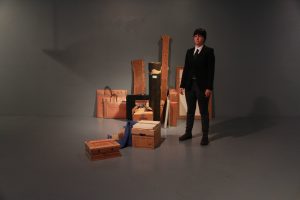
On Guard, performance centering on the installation of long-stored objects from the Bilge Civelekoglu Friedlaender Estate, FiveMyles, Brooklyn, 2014.
Mira Friedlaender is CAA’s Senior Manager of Annual Conference and Programs. Since joining CAA in 2018, Mira has worked with a significant portion of members (new and returning!) and continues to do so each year to support their participation in conference sessions and events. She produces the event with CAA staff, committees, and partners, attending to myriad details while also working to refine and reshape the conference each year in support of CAA’s long-term strategic goals. Mira was previously an exhibition manager for nonprofits such as No Longer Empty and HappyLuckyNo1. She also worked in television production and co-owned a restaurant in Brooklyn, New York.
As an artist and independent scholar of art stewardship, Mira has exhibited locally and internationally, and her work has been featured in the New York Times and Bomb. She has held residencies at the American Center in Bangladesh and Recess in New York. She is the Director of the Bilge Friedlaender Estate, was a fellow in the Art & Law Program, and cocurated Bilge Friedlaender: Words, Numbers, Lines in Istanbul.
“Since her death, I’ve been stewarding the art my mother Bilge Friedlaender (née Civelekoglu) made, beginning more actively in 2014 with my project at Recess, which was still in Soho at that time. I’ve contributed to the scholarship on artist estates through this work and through knowledge sharing; as an artist and artist’s heir I am most interested in performing an emotional institutional critique of the challenges artist-stewards face, particularly those without infinite resources,” explains Mira.
Curated by Işın Önol, Bilge Friedlaender’s never-before-seen works from the 1970s are on view now at Sapar Contemporary in New York City through April 10. Bilge’s work occupies a unique place in the Turkish and Middle Eastern modernist tradition as well as in the history of twentieth-century American art, especially the soulful minimalism of 1970s—not unlike the work of Zarina Hashmi, Etel Adnan, and Huguette Caland. Bilgé’s minimalism is infused with Sufi mysticism, sacred numerology, and reverence for nature and the divine feminine. Her spiritual feminism evolved into an overt ecofeminism as she grew older.
“My mother left Turkey in 1958 to come to the US and be an artist, and she exhibited until her death. Since 2015 there has been a museum show of her work in Istanbul and there have been subsequent opportunities for Bilge’s work, but this is the first time her work has been shown in New York City since 1981. This is a big step for the estate. Next, we are looking to travel this incredible selection of the works on paper and artist books with the goal of expanding the scholarship around Bilge’s artworks and extensive writings.”
Join Mira and curator Işın Önol in conversation with guests on April 4, 6 p.m. ET, at Sapar Contemporary.
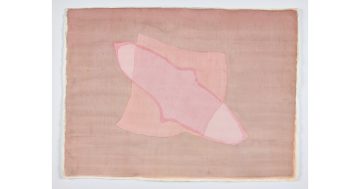
Bilge Friedlaender, Weightless Pink, 1975
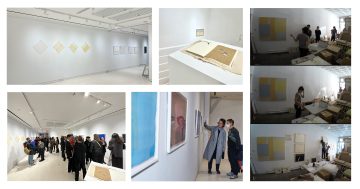
Bilgé: Lifespan of a Horizontal Line, Sapar Contemporary, 2023, and, right column, Half of What’s There, Recess Art, 2014
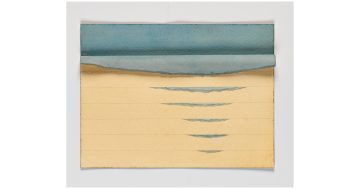
Bilge Friedlaender, Tides Time II, 1975
CAA Signs ACLS Statement on Florida House Bill 999
posted by CAA — March 07, 2023
CAA has signed on to a statement issued by the American Council of Learned Societies (ACLS) regarding Florida HB 999. This bill would radically shift Florida’s approach to higher education in a manner that negatively impacts diversity and academic freedom; this is antithetical to CAA’s mission.
CAA stands with ACLS, together with other academic societies, and shares their belief that, if passed, the bill “ends academic freedom in the state’s public colleges and universities, with dire consequences for their teaching, research, and financial well-being.”
The full ACLS statement on Florida HB 999 can be viewed here. CAA encourages individual and institutional members to visit the ACLS website and sign on to the ACLS statement, as well as contact legislators, write op-eds, and proliferate information on social media to fight this bill.
Other learned societies and higher education institutions who have signed the ACLS statement:
American Academy of Religion
American Anthropological Association
American Association for Italian Studies
American Folklore Society
American Historical Association
American Musicological Society
American Philosophical Association
American Political Science Association
American Society for Environmental History
American Sociological Association
Association for Slavic, East European, and Eurasian Studies
Association for the Study of African American Life and History
Association of University Presses
College Art Association
German Studies Association
Latin American Studies Association
Linguistic Society of America
Medieval Academy of America
Modern Language Association
National Council of Teachers of English
National Council on Public History
National Women’s Studies Association
Organization of American Historians
Rhetoric Society of America
Sixteenth Century Society & Conference
Society for Ethnomusicology
Society for Music Theory
Society for the History of Technology
Society of Biblical Literature
World History Association
CAA has also signed on to a Florida HB 999 statement issued by the American Historical Association (AHA) which can be viewed here.
Other organizations who have signed the AHA statement:
African American Intellectual History Society
American Anthropological Association
American Association for the History of Medicine
American Association of University Professors
American Folklore Society
American Philosophical Association
American Society for Environmental History
American Sociological Association
Association for Slavic, East European, and Eurasian Studies
Association for the Study of African American Life and History
Association of Ancient Historians
Association of University Presses
Berkshire Conference of Women Historians
Black Heritage Trail of New Hampshire
Central European History Society
College Art Association
Committee on LGBT History
Conference on Latin American History
Executive Committee of the Czechoslovak Studies Association
French Colonial Historical Society
German Studies Association
H-France
Historians for Peace and Democracy
Immigration and Ethnic History Society
Kurt Vonnegut Museum and Library
Labor and Working Class History Association
LGBTQ History Museum of Central Florida
Linguistic Society of America
Medieval Academy of America
National Association of Diversity Officers in Higher Education
National Council on Public History
National Council of Teachers of English
New England Historical Association
North American Conference on British Studies
North American Society for Oceanic History
Organization of American Historians
PEN America
Polish American Historical Association
Radical History Review
Roy Rosenzweig Center for History and New Media
Shakespeare Association of America
Social Welfare History Group
Society for Austrian and Habsburg History
Society for French Historical Studies
Society for Historians of the Gilded Age and Progressive Era
Society for Textual Scholarship
Society for the History of the Early American Republic
Society for the History of Technology
Society for the History of the Early American Republic
Society for U.S. Intellectual History
Southern Historical Association
Texas Institute of Letters
Tully Center for Free Speech at Syracuse University
Western Society for French History
Woodhull Freedom Foundation
World History Association
Meet the Michael Aurbach Fellowship for Excellence in Visual Art Inaugural Recipient and Honorable Mentions
posted by CAA — March 07, 2023
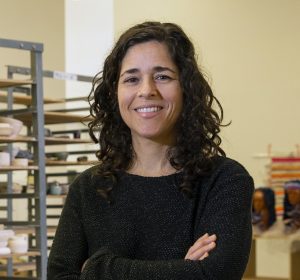
CAA is pleased to announce the first ever recipient of the first Michael Aurbach Fellowship for Excellence in Visual Art: Lauren Sandler.
Lauren Sandler is a ceramic artist and educator whose work deconstructs mythologies and investigates narratives of power and perspective. Sandler exhibits nationally, and gives talks, workshops, and publishes work concerning contemporary and historic issues in ceramics. She holds an MFA in Ceramics from Penn State University, and undergraduate degrees in Anthropology and Ceramics from Ithaca College and SUNY New Paltz. She served on the Board of the National Council on Education for the Ceramic Arts as Director at Large from 2019–22 and is currently Associate Professor and Program Head of Ceramics at Tyler School of Art and Architecture at Temple University.
HONORABLE MENTIONS
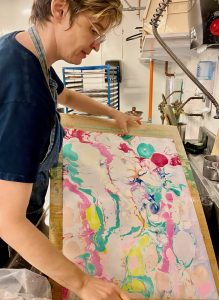
Ellen Wetmore, University of Massachusetts Lowell
Ellen Wetmore is a Professor of Art and Chair of the Department of Art and Design at the University of Massachusetts, Lowell. She is a graduate of the University of Michigan (BFA, BA in Art History) and Tufts University/School of the Museum of Fine Arts (MFA), and joined UMass Lowell in 2007. She is a participant of CAA, UFVA, Cultivamos Cultura, and past member of the Boston Sculptors Gallery. Her awards include a 2017 Berkshire Taconic ART Fellowship and a 2017 Massachusetts Cultural Council Fellowship. Her social concerns include neuro-atypical disabilities, race and teaching, money and art. Wetmore’s current artistic practice reinterprets history, art history, and investigates visual thinking. Wetmore’s projects have been featured at the Boston Cyberarts Art on the Marquee, the Indianapolis Art Center, the Sandwell Arts Trust, Ciné Lumière, London, CologneOff, Germany, the InShadow Festival, Lisbon, and Videoholica in Bulgaria. She is a 2012 School of the Museum of Fine Arts Traveling Fellow and a summer 2015 visiting artist at the American Academy of Rome. Her most recent solo exhibition was a drawing study of the collection at the Fitchburg Art Museum. Her current science collaborations explore printed, fabric-based video displays, text and memory in fat cells, and the characterization of high fire ceramic glazes in a Cambodian wood fired kiln. Her first graphic novel, Dante’s Inferno, is a fictional account of race and the academic hiring process.
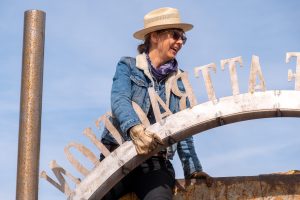
Allison Wiese, University of San Diego
Allison Wiese is an interdisciplinary artist who makes sculptures, installations, sound works, performances, and architectural interventions. Her work is often created for public spaces at the boundaries of or outside institutions, and has been exhibited at, among other venues, Machine Project, Los Angeles, the Museum of Contemporary Art, San Diego and Socrates Sculpture Park, New York. She is the recipient of a Louis Comfort Tiffany Award and has received grants from Art Matters, Creative Capital, the Cultural Arts Council of Houston, and the City of San Diego’s Commission for Arts and Culture. A fellow of MacDowell and an alumna of the Skowhegan School of Painting and Sculpture, Wiese was a Core Fellow of the Museum of Fine Arts, Houston, received her MFA from the University of California, San Diego, and a BA from Brown University. Wiese is an Associate Professor at the University of San Diego.
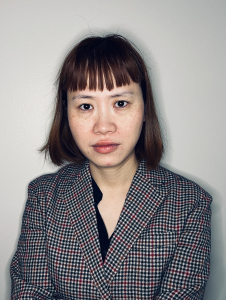
Ziui Vance, Temple University
Ziui explores the semiotics of bodies, their chaotic signals, and spatiality. She makes the paintings, objects, and installations inside the disputed realm between affection and dominance, rules and reality. Characterized by a play-like process, Ziui describes a variety of body configurations with an intricate intensity that reflected on gender, ethnicity, and perceptions: an infinite tapestry of imagery associated with her exoneration from the polar complexities of being Chinese in the United States.
ABOUT THE FELLOWSHIP
The Michael Aurbach Fellowship for Excellence in Visual Art recognizes and honors CAA members who have obtained an MFA or equivalent in studio art and are currently teaching studio classes full-time or part-time. The purpose is to support these artist members as they fulfill their goals as visual arts professionals. On an annual basis, CAA will grant a $7,500 award and registration to the CAA Annual Conference to a qualified artist member teaching at an American or international university or community college. A jury of artists will adjudicate the fellowship and a proposal will not be required; the recipient will be selected solely based on their work. Learn more.
CWA Picks: Spring 2023
posted by CAA — March 06, 2023
The CAA Committee on Women in the Arts (CWA) Spring Picks focus on exhibitions and literature that explore an interrelatedness of art and science. From the science of future technology to the science of biology, these artists utilize traditional and technological materials in their heterogeneous work.
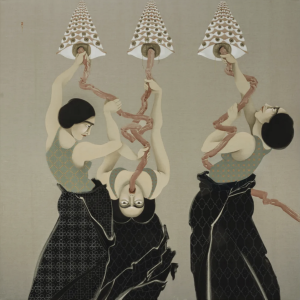
Hayv Kahraman, Eye megaphones, 2023, Oil and torshi on linen, 177.8 x 177.8 x 6.4 cm
Hayv Kahramen, February 6 – March 25
Third Line Gallery, Dubai
Occupying both gallery spaces, Hayv Kahraman presents a series of new paintings and drawings that continue her ongoing scientific research and exploration into the effects of trauma on the body, and the role of the gut in our healing process.
Kahraman’s practice is heavily guided by her refugee experience, where notions of gender and trauma are consistent themes throughout her work. Recently, the artist has directed her research towards neuroscience, human immunology and “neurosculpting” – the ability to restructure the neural pathways in our brain through the gut microbiome – and how they specifically relate to trauma, and our ultimate goal to heal and repair.
Often referred to as the body’s “second brain”, the gut is responsible for our somatic state whereby the bacteria inside our gut regulates the hormones that control our feelings. Kahraman became increasingly fascinated with this theory, and how neurosculpting offers the potential to heal through the process of unlearning and relearning. In this body of work, Kahraman applies this theory alongside her own lived experiences to highlight the puissant connection between the mind and the body. Exposed and tangled digestive organs act as a visual metaphor of unraveling the restorative process.
Delving further into the gut microbiome as a site for recognition and renewal, Kahraman addresses the notion of “otherness” through the medium in which she paints. We have learnt to consider the bacteria and foreign microbes found inside our gut as undesirable, but in fact they are fundamental to our human psyche. By incorporating into her paintings the lilac dye from torshi – fermented beetroot served in Middle Eastern cuisine which is believed to improve mental wellbeing via the gut, and jars of which are on view in the exhibition – Kahraman affirms that the microbial world is verification of our acceptance of difference. Physically painting with torshi – i.e. bacteria – serves as an allegory to how we sentient beings live in symbiosis with the “other”.
Sarah Sze, March 31 – September 10
Solomon R. Guggenheim Museum, NY
Organized by Kyung An, Associate Curator, Asian Art, and was conceived and contributed to by Nancy Spector, former Jennifer and David Stockman Chief Curator.
The Solomon R. Guggenheim Museum will present a solo exhibition of Sarah Sze (b. 1969, Boston) featuring a series of site-specific installations by the acclaimed New York–based artist. Sarah Sze: Timelapse will unravel a trail of discovery through multiple spaces of the iconic Frank Lloyd Wright building, from the exterior of the museum to the sixth level of the rotunda and the adjacent tower level gallery. The exhibition will explore Sze’s ongoing reflection on how our experience of time and place is continuously reshaped in relationship to the constant stream of objects, images, and information in today’s digitally and materially saturated world.
Sze creates across multiple mediums employing painting, sculpture, drawing, printmaking, video, and installation. She is well known for her intricate constructions using a myriad of both fabricated and found objects and images. Whether an intimately scaled sculpture or a large, permanent public commission, her works possess a generative quality—as though in a cycle of growth and decay—and dynamically engage with the spaces they occupy.
In Sze’s reimagination, the Guggenheim’s iconic, UNESCO World Heritage architecture becomes a public timekeeper in a reminder that timelines are built through shared experience and memory. In the words of the artist, “Like the collective efforts used by humans over centuries to communally mark time, to measure and mark it in physical form—ranging from Jantar Mantar, to the Prime Meridian line, to ubiquitous minarets, clock towers, and animated or astronomical clocks around the world—the museum building will become a site to explore the idea of a public clock, and an experiment in collective timekeeping that all in the city can experience.”
Inside the museum, quiet gestures, such as a single pendulum hovering above the fountain on the rotunda floor and a small sculptural installation tucked into an interstitial space in front of the freight elevator, demonstrate Sze’s distinct engagement with unexpected spaces. Visitors will enter an immersive environment: a panoramic sequence of eight bays occupied by a new series of works comprising painting, sculpture, video, drawing, and sound. These will be connected by a river of videos—seen earlier on the building’s street-level facade—which slowly travels up the spiral expanse of the building’s interior, creating a horizon line of moving images. As it travels across, above, and behind the works on view, visitors will be absorbed into a generative experience, continually re-orienting themselves temporally and spatially.
Kopotu Ipikosi (And They Overcame)
Pamela Enyonu, February 28 – March 28
AKKA Projects, Dubai
What is Fear?
Why do we Fear equality?
How does this Fear of achieving equality express itself in and around me?
This artistic essay is an exploration of the phenomenon of fear, and the positions it is experienced from; the instigation of fear and the effects it has on individual bodies and entire communities. What are the elements that create fear, how do the instigators of fear experience it and weaponise fear to curtail autonomy, and how is this activity systemised because it grows in scope and effectiveness; mass hysteria.
The artistic intervention aims to assess whether the effects of fear can be countered or even anticipated and to study the damage fear has on the quality of human expression. Pamela Enyonu was born in 1985 in Kampala, Uganda where she currently lives and works. Pamela studied Art and Design at the Kyambogo University Banda of Kampala, Uganda. Her artistic career started in 2017 with a 3 months residency at 32 degrees East, in Kampala, where she navigated the politics of identity, trauma, and healing. After her residency, she was invited to host a solo exhibition in June 2017. Another artist’s residency in Paris, France, followed in 2020, on the occasion of Africa 2020. In 2022, Enyonu has concluded her residency at AKKA Project in Venice, Italy, also being hosted by ProHelvetia, Zurich, Switzerland, in the same year.
Pamela’s style is inspired by stories, materials, and the process it takes to transform them into works of art. Her works present a tactile and 3-dimensional quality that richly layered textures exploring narratives on gender, identity, empowerment, and self-awareness. Pamela is particularly interested in the “untokenized” experiences occupying the intersection of empowerment, mental health, and identity. She continuously engages with the different communities through collaborations, workshops and seminars. Recently, some of Pamela’s latest works have been acquired by Africa First, and have become part of its private collection of contemporary African art.
Jennifer Chen , February 10 – April 30
Sci Arc, Los Angeles
No Evil imagines a long distant future when, after planetary scaled geoengineering systems have saved earth’s population from climate extinction, planet surviving events have become new creation stories: “machines that once filled the air, sown the seeds, fertilized the ocean, and dimmed the sun have long since been decommissioned.”
Exploring a world that was once on the brink of collapse, “saved only by the forgotten creatures of the past,” Chen is interested in using radical geoengineering processes as a lens through which we can investigate practical responses to climate restoration.
Using 2D and 3D data corrupting techniques to simulate the fading of memories across time and a mixture of analogue techniques including weaving, sewing, welding, and casting, as well as digital fabrication techniques including 3D printing and CNC milling, the exhibition combines decayed digital data and new cultural curiosities to imagine a world where new mythologies are created, giving rise to a new form of craft. Audiences will wander through an abstract forest landscape drawn from this future and encounter fragments of worship, shrines, tapestries, and stories told through film and objects. No Evil invites viewers to consider the forgotten tales, myths, and artifacts that once celebrated and revered these speculative relics of climate resistance as a reminder of what future could await us all if today, we turn a blind eye and cover our ears.
Chen is faculty at SCI-Arc and an architect and designer who works at the intersection of science and fiction, exploring themes of geoengineering, remote sensing, and climate change futures in projects that take the form of buildings, installation, film, and performance. Her new exhibition imagines a long distant future when, after planetary scaled geoengineering systems have saved earth’s population from climate extinction, planet surviving events have become new creation stories.
Tia Keobounpheng , July 22 – October 9
US Bank Gallery, The Minnesota Arts Exhibition Program
A Finnish and Sámi descendent, Keobounpheng uses her artistic practice to recognize her familial connections to both the colonizers and the colonized. “Revealing Threads” will feature her abstract tapestries, influenced by traditional Nordic handwork techniques but infused with contemporary interpretations and symbolism. The results speak to marginalized histories, heritage, and the complexity of personal identity. The works will be informed by a research trip to Sápmi, the traditional land of the Sami people, in fall 2022.
Keobounpheng is a designer/maker and artist living and working in North Minneapolis. She is a recipient of the 2017 and 2020 MN State Arts Board’s Artist Initiative Grant, 2018 McKnight Foundation’s Next Step Fund, and 2022 MN State Arts Board Creative Support for Individuals Grant. Her work has been shown at the American Swedish Institute, in Minneapolis; the Finlandia University Gallery, in Hancock, Michigan; the University of St. Thomas, in St. Paul; and the Anderson Center, in Red Wing, Minnesota. Her laser-cut jewelry has been sold by design retailers across the country for over a decade.
Fran Siegel , January 14 – March 4
Wilding Cran Gallery, Los Angeles
Curated by Jill Moniz
Chronicle features 216 small drawings on paper that Siegel started at the onset of the COVID-19 pandemic. Fran visualized the discourse around the virus as extensions of her focus on pinwheel and maps, as a shorthand of place, and the aesthetics approaching abstraction. Moniz pairs these ephemeral works with Siegel’s painted tapestries that incorporate porcelain as armatures, structural hardware that deciphers colonial appropriation and cultural production.
The exhibition offers multiple entry points into dialogues that magnify how making transforms moments, from staged and beautiful, to essential and abject. Siegel’s works are intimate in scale, reflecting how the pandemic dictated her process and inspired introspective collaging of dreams, news and opportunities, unpacking and reassembling iconography that influences how we interpret and shape our worlds.
In her consideration of patterns and pinwheels, Siegel draws out form, emphasizing how we record our relationship to each other and the landscape, and how intricately and intimately connected we are. Siegel’s pinwheels represent for Moniz a fulcrum of visual language that expands and focuses our attention on both specificity and plurality of experiences that benefit from collective empathy. Chronicle explores Moniz and Siegel’s shared commitment to the depth and complexity of cultural associations foundational to place, and meaning making through art practice.
The Art of Gilah Yelin Hirsch
Literature/publication
curated and edited by Donna Stein
A retrospective survey of the Canadian American artist’s career.
Characterized by a search for meaning, Hirsch’s oeuvre connects psychological, scientific, and philosophical implications of form, bringing together ideas in art, science, ecology, and human consciousness.
The artworks in multiple and mixed media provide an evolving history of Hirsch’s ideas and craft as they illustrate the progression of her original research on the origin of all alphabets. Her elegant theory about five fundamental shapes in nature that reflect forms of neurons and neural processes of perception and cognition as the source of all letterforms in alphabets ancient to modern has gained acceptance in scientific circles. Her evidence shows that while cultures and languages bring unique beauty and richness to the world, we, as humankind, are more alike than different.
Since the 1980s, Hirsch has also been a pioneer in the field of mind/body healing, developing a type of visualization practice that serves as an instrument toward wellness. By organizing seemingly disparate information into a far-reaching scientific theory, Hirsch is recognized internationally for these techniques and has advanced healing practices through the arts.
Archaeology of Metaphor connects the artist’s visual themes to her philosophy and ideas, simultaneously encouraging greater awareness of pattern recognition, social dynamics, and interconnectedness.
Jessi Reaves: All possessive lusts dispelled
The Arts Club of Chicago
Chicago, IL
February 16-May 20
Jessi Reaves combines iconic modernist design with an irreverent aesthetic in sculpture that toys with functionality. Reaves often begins with found furniture, which she dismantles, converts, remakes, enhances, pads, and embellishes in ways that still allow the suggestion of physical contact or use. By breaking things open, she proposes that they be examined visually and in terms of their purpose in life. The exhibition at The Arts Club of Chicago centers on the work Personal Heat, 2021, a deconstructed étagère with accompanying video that explores themes of renovation and rebellion. The sculptural aspect features a pop punk aesthetic of hot pink animal stripes, as if Reaves had been locked in a room in her great aunt’s house with a can of paint, a saw, and some wood glue. The funk and humor of this work and other of Reaves’s sculptures and wall reliefs belie a mastery of complex composition, color, and the ability to integrate disparate materials. Reaves brings to her seemingly off-handed works a range of manual skills that she uses to both humorous and unsettling effect. Jessi Reaves: all possessive lusts dispelled offers a sensuous installation of works that allow the abject to infiltrate the ontology of the object.
The Taxonomy of Peggy Macnamara
March 9–April 28, 2023
Glass Curtain Gallery—Columbia College Chicago
1104 S Wabash Ave, 1st Floor, Chicago, IL 60605
The Taxonomy of Peggy Macnamara features an immense array of artwork that has been created during Macnamara’s tenure as the only artist in residence at the Field Museum. This exhibition focuses on her relationship to observing and working among the collections over decades where practice as an artist, teacher, and collaborator has developed a process of long looking that has created a taxonomy of its own.
Macnamara has traveled across the world, geared with her pencils and watercolors, investigating the fascinating intricacies of nature alongside scientists and peers from the Field Museum. Although her work uses the academic approach of illustrating, her savvy is evident in her loose handling of her art materials to document plants, animals, and related conservation work. Macnamara’s work artfully captures living things (or in some cases—once living), educates us, and sparks interest in the complexities of the natural world.
This exhibition hones in on a tapestry of works that inspire curiosity and deep looking at plants, animals, and the dynamic relationships between them. Macanamara’s attention to detail, and skilled hand at analytically dissecting plants and animals is revealed through the works that leave the stages of the development of a piece visible. We engage with her work for the love of looking, but inevitably discussions about nature, extinction, conservation, and collections permeate its surface. Come take a peek behind the scenes of the Field Museum’s collections through Macnamara’s work, and through special tours accompanying this exhibition.
February 11-June 5th
Art Institute of Chicago
This exhibition brings together nearly 100 rarely seen woodblock prints by Pape, some of which have not been shown publicly since the artist exhibited them in the 1950s and 1960s. Composed of overlapping geometric and linear elements, they at times suggest the clash of atomic particles, rudimentary city plans, or slides of microscopic specimens.
CAA Signs On to NCAC Letter Regarding Arkansas Tech University Exhibition
posted by CAA — February 08, 2023
CAA has issued a joint letter with the National Coalition Against Censorship (NCAC) regarding a recent exhibition on display at Arkansas Tech University (ATU). The subject matter in the exhibit centers on issues of race and representations of troubling components of American history. After students of color voiced objections to the exhibition, the artist withdrew her exhibition.
We believe context is essential for artists to produce and display their work, and for others to consume that work with a critical gaze. The drafted letter states, in part, “by abdicating its responsibility as an educational institution to stand by its exhibition programming and actively create productive dialogue around it, the University has failed its students and the artist.” Previously, CAA collaborated with a number of agencies to create Museum Best Practices for Managing Controversy, a set of guidelines offering best practices for institutions “concerned about or confronted with accusations of inappropriate, objectionable, or offensive content.”
The full letter can be viewed here.


